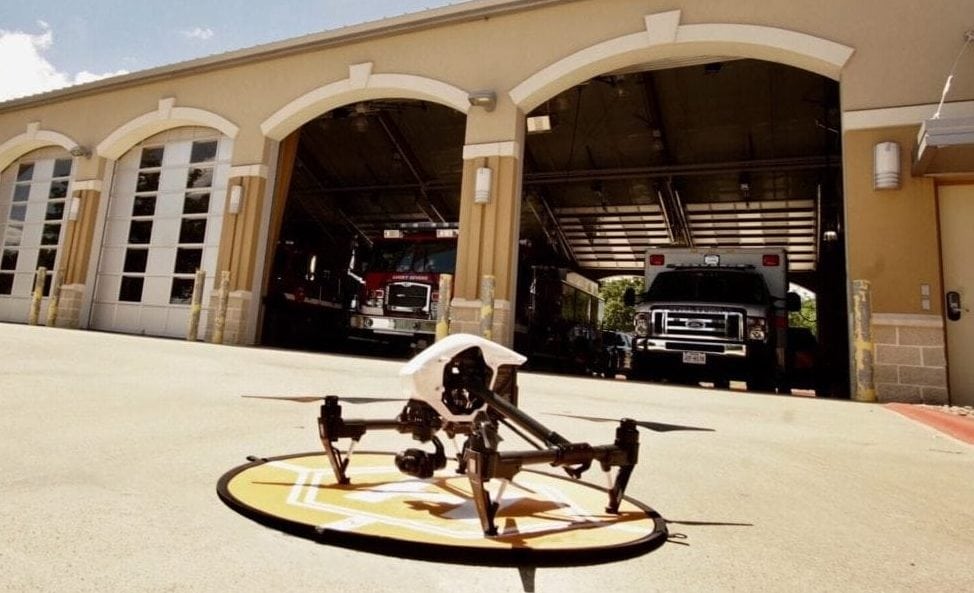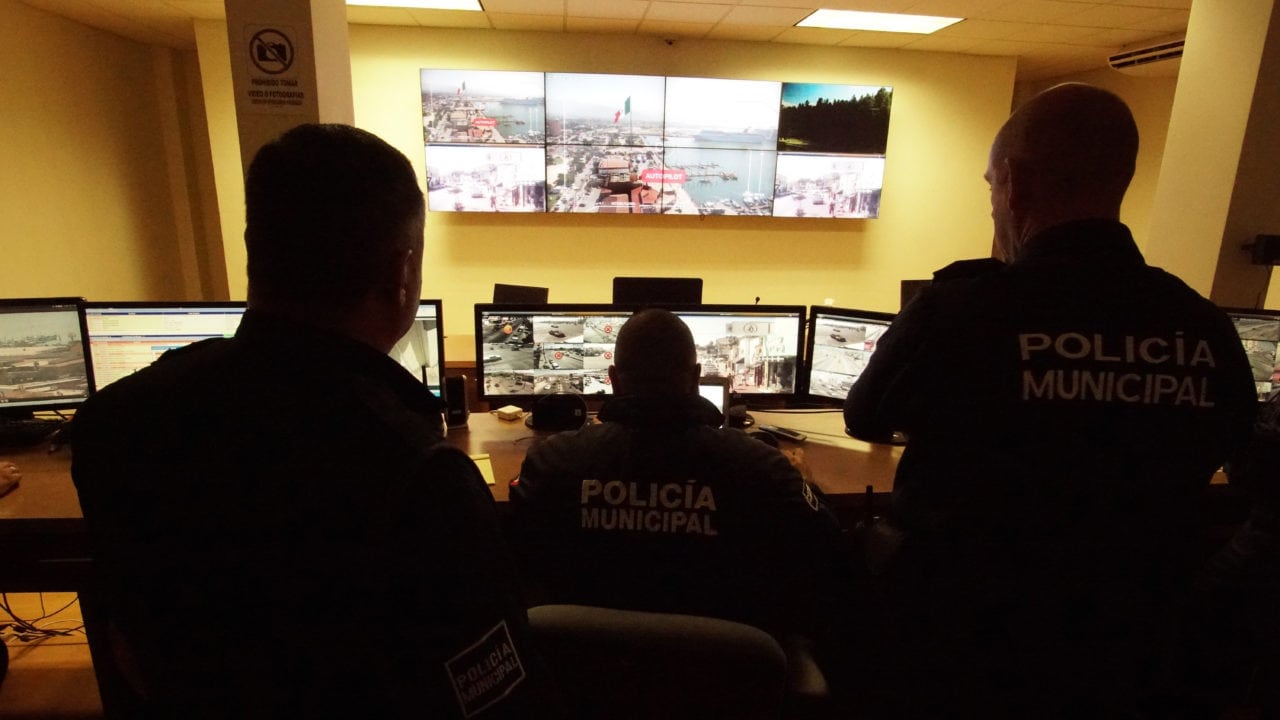
A Cape-equipped DJI quadcopter out front of the Ensenada, Mexico fire department. (Cape)
One of the U.S.’s 10 participants in the nation-wide drone integration pilot program (IPP) launched in San Diego, California last week. To kick it off, the San Diego Fire Department responded to a simulation fire call in concert with drones equipped with aerial telepresence software provided by Cape.
The Department of Transportation’s IPP is comprised of public-private partnerships intended to study the safe integration of UAS into the national airspace. In San Diego, the focus is on food and medicine delivery, border protection and public safety, with partners including Cape, Intel, Uber, AT&T, the city of Chula Vista and some local schools.
At the fire call demonstration, the Cape-equipped drone arrived at the scene of the “fire” in about a minute. With the help of its eye-in-the-sky guidance, firefighters were able to locate the incident more quickly after the firetruck arrived about four minutes later. They had had eyes on the scene via an iPad while the truck was still en route.
Cape’s software “connects the drone to the Cape cloud, and with it being connected, it has real-time communications for this sort of telemetry and any sensor data, most typically cameras,” said Chris Rittler, Cape’s CEO since he joined the company in January. “The operator who is viewing the live stream can also manipulate the camera in space. You know, I think it really captures aerial telepresence; the fact that you could just open a web browser, connect to a drone and now the drone takes off utilizing its autopilot features but then you can manipulate it in space.”
Cape’s tech has already been used in partnership with some cities and precincts. The city of Ensenada, Mexico’s police department integrated a DJI quadcopter equipped with Cape’s telepresence solution into its operations close to a year ago and has shared the results: a 10% overall reduction in crime including a 25% drop in violent robberies and 22% reduction in vehicle theft. The department reports an emergency call response time reduction of 90% and attributes 513 arrests to drone use.

The Ensenada police observing video transmitted from a Cape-equipped drone. (Cape)
Rittler said that there are three main areas that Cape and the other relevant partners in San Diego hope to make progress through the IPP.
The first is improving the department’s efficacy. Through the use of drones that can skip ground traffic and provide increased awareness, the hope is that firefighters and police officers can perform their jobs more effectively.
The second is resource allocation. Rittler said that better situational awareness back in the command center allows dispatch to make better-informed decisions about when and where to allocate resources, improving efficiency.
The final major goal concerns regulation. Rittler said that applying for the appropriate waivers and approvals will probably always be necessary, but they hope a standard can be set to make the process “boilerplate,” for the FAA and public safety organizations, so the process is quick and easy rather than thousands of agencies submitting unique requests.
Outside of public safety, Cape’s primary market segments are industrial asset inspection and agriculture. In the same ways, those fields benefit from allowing an expert to get a better look at things remotely before deciding whether someone needs to be sent out for further inspection or repairs.
The U.S. government launched the IPP because drones are a quickly expanding industry. Civilians and companies alike are embracing them and finding new uses every day. Rittler is confident that we’re on the cusp of a broader integration into the fabric of society.
“I really think we’re at that point, kind of like when the smartphone first came out, everybody said ‘This will never be used in enterprise,'” he said. “And all of a sudden, it became the enterprise tool, and everybody was creating mobile enterprise applications and mobile enterprise extensions. I think we’re right there at the end of that curve as well.”